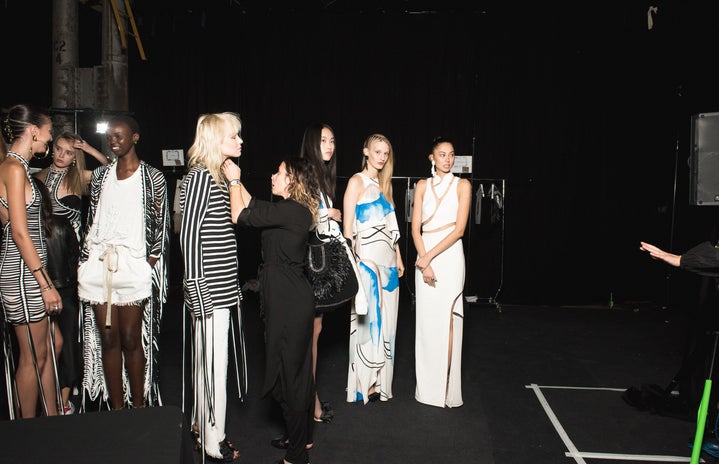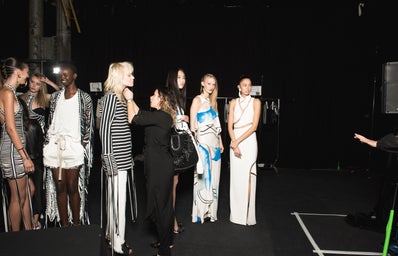Recently, there has been a shift in culture. We have moved from outrageous and lavish lifestyles to ones that promote more order, practicality and calmness. This shift is moving to what can be referred to as “normie culture”. Many facets of our current community portray this shift in culture, one of which being designer fashion. Fashion is known for reflecting the mindsets of certain eras, some could argue that it does a better job of reflecting these mentalities than any other art-form.
Over the past ten years designer fashion has been known for its extreme artistic and avant-garde designs. We have seen runway shows with the most theatrical fashion pieces, including the infamous spray-on dress that supermodel Bella Hadid displayed at the Coperni SS 2023 runway. Many other designers are known to showcase outrageous fashion pieces that have been referred to as art instead of clothing.
As brilliant as these pieces were, they were always ridiculed for being impractical and just “too much” for the average consumer. Most consumers could not find any event where these pieces would be appropriate except for runway events and red carpets. This led to a critique of designer wear only targeting elites such as models, actors and of course, influencers. It also led to the public belief that designer fashion houses use stunts to make pieces go viral. An example of this would be the viral Diesel miniskirt.
However, we now have fashion designers displaying the complete opposite side of the spectrum. As 2023 began we have seen a significant move away from the showy fashion that has become so familiar with the runway. Designers have completely contrasted the eclectic, attention-demanding designs. Instead, they are presenting designs that are more classic, simple and most importantly practical.
One of the designers providing a palate cleanser to consumers would be Versace. The fashion house’s recent designs have made use of classic silhouettes and timeless pieces such as white tank tops, trench coats and of course blue jeans. These designs present pieces that are practical and comfortable but also chic and effortless. Many other designer fashion houses have had runway shows with this same motif, including Miu Miu, Celine and Sandy Liang.
Another indicator of the rise of normie culture would be the commercialisation of designer fashion brands. Examples of this would be the sub-house of Marc Jacobs, Heaven by Marc Jacobs. Heaven by Marc Jacobs has risen in popularity with its fun designs aimed at teenagers and young adults. The Heaven range allows people to have more access to Marc Jacobs as a designer but with significantly lower prices than the designer tag. Heaven also consists of designs that are a lot more practical such as graphic t-shirts, miniskirts and fun hats. Heaven is also constantly creating up pop-up shops to make their clothing more accessible to a larger group.
Another brand making designer wear more accessible would be Mugler, who has recently teamed with H&M to create Mugler H&M. This allows Mugler to sell designer fashion pieces at H&M stores at a much lower price than stand-alone Mugler. The designs that Mugler has made available at the H&M stores is also a lot more practical and less avant-garde than their usual boundary-pushing pieces. When fashion houses making designs more accessible and affordable, designer fashion wear becomes more normalised and is viewed as a practical piece of clothing.
Perhaps designer fashion houses are making these changes due to the issue of fast fashion showcasing how lavish and artistic pieces are only trendy for a little bit before they lose their stride and fall out of style. Brands could be moving to these more normal fashion pieces so that they may last longer in people’s wardrobes. Fashion houses could also be moving toward this change because of the world-wide recession, it could be seen as a rejection of the bourgeoise and as an attempt to keep designer fashion alive during this time. It is however important to note that all fashion styles, even classic and timeless fashion, are trends and will not last forever. Fashion works in a cycle and it is not the first time that designer fashion has moved to a more practical style, and it won’t be the last.
With the shift in fashion cultures, the loss of blue ticks on Twitter causing elites to be viewed as humble and the post-covid “back to normal” mentality, it is easy to see that the rise of normie culture is amongst us.


